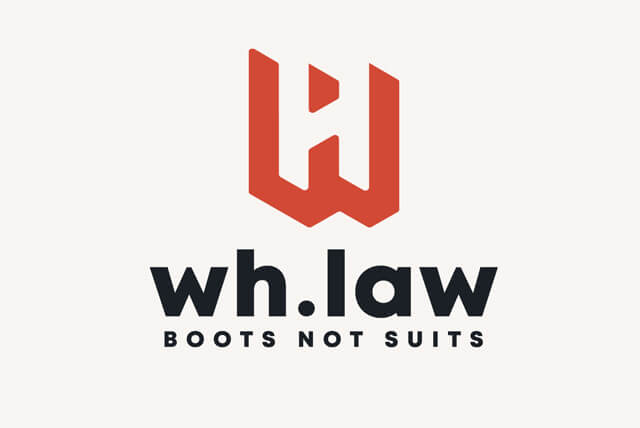If you’re pregnant and employed, knowing your rights under the Pregnancy and Discrimination Act is crucial to protect yourself from workplace discrimination. This crucial piece of federal legislation ensures you are treated equally, from hiring to job security. Find out in our comprehensive guide how the act guards your rights and what you can do if they’re compromised.
Key Takeaways
- The Pregnancy Discrimination Act (PDA) ensures fair treatment for pregnant employees, making it illegal for employers to discriminate in any aspect of employment, and covers both direct and indirect discrimination.
- Pregnant employees have federally protected rights under multiple laws, including the PDA, ADA, and FMLA, which allow for reasonable accommodations, protection from coercion into involuntary leave, and extend up to 12 weeks of unpaid, job-protected leave.
- To address pregnancy discrimination, employees should document incidents, seek internal resolution, and may consider filing a charge with the EEOC, all while employers are urged to support pregnant workers by implementing practices that challenge stereotypes and promote equality.
The Core of the Pregnancy Discrimination Act (PDA)
The Pregnancy Discrimination Act (PDA) is a milestone legislation passed in 1978, which amended Title VII of the Civil Rights Act of 1964 to include pregnancy discrimination as a form of unlawful sex discrimination. The PDA primarily aims to guarantee fair treatment for pregnant workers in the workplace. It makes it illegal for employers with 15 or more employees to discriminate against women due to:
- pregnancy
- childbirth
- abortion
- related medical conditions
The PDA has a simple, yet profound principle at its core: pregnant workers must be treated the same as non-pregnant workers with similar abilities or limitations. Essentially, the Act protects the rights of pregnant employees, allowing them to contribute to the workplace free from discrimination or unfair treatment related to their pregnancy.
What the PDA Specifically Protects Against
The PDA provides a broad spectrum of protections for pregnant employees. It covers all aspects of employment, including:
- Hiring
- Firing
- Pay
- Job assignments
- Promotions
- Layoff
- Training
- Fringe benefits
- Other terms and conditions of employment
That means you cannot be discriminated against during the hiring process due to pregnancy, nor can you be subjected to harassment or a hostile work environment because you are pregnant.
The PDA acts as a robust shield, guaranteeing fair and prejudice-free treatment for pregnant workers or job seekers in the workplace.
Extending Beyond Direct Discrimination
But what about indirect discrimination? The PDA has that covered too! The Act broadens its scope to encompass indirect discrimination, protecting pregnant workers from the adverse effects of workplace policies that disproportionately impact them, even if they don’t explicitly target pregnancy.
For instance, policies that require medical clearance exclusively for pregnancy-related conditions or that prevent an employee from returning to work for a set period post-childbirth are examples of indirect discrimination. With the PDA, pregnant workers can confidently challenge such indirect discrimination, paving the way for more transparent and inclusive workplace policies.
Rights of Pregnant Employees Under Federal Law
The PDA is not the only federal law that protects pregnant workers. Other laws, such as the Americans with Disabilities Act (ADA) and the Family and Medical Leave Act (FMLA), also play crucial roles in safeguarding the rights of pregnant workers. Federal law prohibits discrimination against pregnant workers, which includes forcing them to stop working or take leave if they are still capable and willing to work.
Furthermore, federal laws mandate employers to provide reasonable accommodations for pregnant workers, such as allowing breaks for nursing mothers to express breast milk in a suitable place that is not a bathroom. Additionally, the Pregnant Workers Fairness Act (PWFA) protects pregnant workers from being coerced into involuntary leave, ensuring they can seek accommodations and maintain employment according to their individual needs.
Some state laws even offer additional protections for pregnant workers beyond federal requirements, providing extended accommodations, unpaid and paid job-protected leave, and further rights, such as those related to lactation.
The Intersection with the Americans with Disabilities Act
Pregnancy itself is not considered a disability under the Americans with Disabilities Act (ADA). However, pregnancy related disabilities, such as gestational diabetes, do fall under the protection of the ADA and can necessitate reasonable accommodations from employers. Thus, employers are obligated to engage in a dialogue with employees to identify and provide reasonable accommodations for disabilities related to pregnancy, in line with the ADA’s stipulations.
Understanding Your Entitlements Under the Family and Medical Leave Act
In addition to the PDA and ADA, the Family and Medical Leave Act (FMLA) also provides important protections for pregnant employees. Eligible employees are entitled to unpaid leave for pregnancy, childbirth or related medical conditions, allowing them to take care of their health and their newborn without worrying about job security. Employees can take up to 12 weeks of unpaid, job-protected leave for:
- pregnancy-related conditions
- childbirth
- recovery
- caring for a newborn
During FMLA leave, it is important for employers to continue providing health insurance benefits for pregnant workers. This requirement ensures that they have access to necessary medical coverage during their absence from work.
Addressing Discrimination: Steps for Pregnant Workers
Recognition and confrontation of discrimination are vital steps towards safeguarding the rights of pregnant workers. To combat pregnancy discrimination, it’s important to know the steps you can take to address this issue if you’re facing discrimination due to your pregnancy. These include documenting incidents, seeking internal resolution, and if necessary, filing a charge with the Equal Employment Opportunity Commission (EEOC).
Remember, you are protected under Title VII, the PWFA, and the ADA from retaliation by your employer for filing a charge, testifying, assisting, or participating in any manner in an investigation, proceeding, or litigation under these laws.
Documenting Incidents and Seeking Internal Resolution
The first step in addressing discrimination is to:
- Document any discriminatory comments or actions. Write down the details, including the exact time, the context, and any witnesses present.
- Keep meticulous records of all related communications.
- Document any requests for accommodation alongside any work restrictions advised by your doctor.
Upon facing discrimination, it’s advisable to:
- File a complaint with your Human Resources department or a direct supervisor
- Provide a detailed account of what transpired
- Include any supporting evidence or witness contact information.
Filing a Charge with the Equal Employment Opportunity Commission
If internal resolution is ineffective, the next step is to file a formal charge of pregnancy discrimination with the Equal Employment Opportunity Commission (EEOC). The EEOC provides a platform for filing a complaint, whether it’s through:
- visiting an EEOC office
- calling to initiate the process
- using the EEOC Public Portal
- mailing a signed letter detailing the discrimination.
Remember, the deadline for filing a charge with the EEOC is 180 days from the occurrence of discrimination, which can be extended to 300 days if a state or local agency also covers the discriminatory act.
Navigating Workplace Accommodations and Leave Policies
While navigating workplace accommodations and leave policies can be intricate, gaining knowledge about the rights and protections law grants you can simplify the process. The law requires employers to provide reasonable accommodations for pregnant employees, just like those provided to other temporarily disabled employees, including:
- Light duty
- Modified tasks
- Alternative assignments
- Disability leave
- Leave without pay
Employers also have a duty to engage in an interactive process with pregnant workers to find suitable accommodations that meet their needs without causing undue hardship to the employer.
When and How to Request Reasonable Accommodation
As a pregnant worker, you can request reasonable accommodations without the need to use specific legal terms. This can be done through in-person meetings or electronic communications. Reasonable accommodations could include:
- Alterations such as light duty
- Temporary transfers to less strenuous or hazardous work
- Additional breaks
- Flexible work schedules
If your request for reasonable accommodation is denied, document the request and denial, as employers may need to demonstrate how they accommodate other temporary disabilities.
Understanding Employer Leave Policies
Understanding your employer’s leave policies is also a critical part of navigating your rights as a pregnant worker. Employers must provide the same benefits to employees on medical leave for pregnancy-related conditions as they would to employees on leave for other medical reasons. A job must be held open for an employee who is absent due to pregnancy for the same amount of time that the job would be held for employees on sick or temporary disability leave.
Challenging Stereotypes and Promoting Equality
The collective responsibility of challenging stereotypes and fostering equality in the workplace can aid in reducing workplace pregnancy discrimination. Stereotypes about pregnant women often include assumptions that they are less committed to their job, will not return after maternity leave, or will be less competent, contributing to discrimination. Despite efforts to address these issues, pregnancy discrimination remains a concern for many.
As such, strategies to challenge these stereotypes and promote equality can play a significant role in supporting pregnant employees and ensuring a fair and inclusive workplace.
The Impact of Stereotypes on Employment Decisions
Stereotypes can significantly impact employment decisions, such as promotions and hiring, for pregnant workers and new parents. For example, stereotypes can lead to the assumption that pregnant employees or those with young children are not suitable for leadership roles or high-pressure tasks, impacting promotion and advancement opportunities.
Employers may also make hiring decisions based on the stereotype that a woman, especially a pregnant woman, will soon become pregnant and thus will not be a long-term asset to the company.
Strategies Employers Can Implement to Support Pregnant Workers
Employers can play a crucial role in breaking down these stereotypes and supporting pregnant workers. Strategies such as providing unconscious bias training and facilitating discussions can enable managers and colleagues to recognize and correct implicit assumptions that lead to discriminatory behavior.
Incorporating clear and supportive policies for pregnant employees within diversity and inclusion initiatives is crucial for achieving gender equality and mitigating negative stereotypes in the workplace.
Legal Recourse for Pregnancy Discrimination Claims
When confronted with pregnancy discrimination, it’s essential to be aware of your legal options. Pregnancy discrimination cases often rely on multiple forms of evidence, such as:
- Direct admissions of discriminatory motives
- Timing of adverse actions following pregnancy revelations
- Comparison with the treatment of non-pregnant employees in similar situations
Legal recourse for pregnancy discrimination includes:
- Filing charges with the EEOC
- Negotiating confidential settlements
- Pursuing litigation when needed, often resulting in monetary benefits based on the case details.
Seeking Legal Advice and Representation
Before filing with the EEOC, consulting with helplines or legal resources that specialize in employment discrimination is recommended to assess the situation. Experienced lawyers are crucial in evaluating the strength of a pregnancy discrimination claim and deciding the best course of action, which could range from negotiating severance to pursuing legal action.
Pregnant employees who face discrimination can gain understanding of their legal action options by consulting with lawyers or legal aid offices.
Potential Outcomes of Legal Action
The potential outcomes of legal action for pregnancy discrimination claims vary. Filing a charge with the EEOC is a precursor to taking legal action such as a lawsuit in cases of severe and unresolved pregnancy discrimination.
Approximately 26% of women who file pregnancy discrimination charges receive some form of benefit from the legal action. Of the women who have pregnancy discrimination charges filed, 25% of white women and 23% of black women receive benefits.
Balancing Work and Pregnancy: Tips for Employees and Employers
Achieving a balance between work and pregnancy presents a unique challenge that calls for comprehension, communication, and backing from both employees and employers. Managers play a crucial role in supporting pregnant employees and creating a workplace that complies with the Pregnancy Discrimination Act.
Encouraging employees to voice their concerns and needs during pregnancy fosters an environment of open communication.
For Pregnant Employees: Advocating for Your Rights
As a pregnant employee, advocating for your rights is essential. This involves clearly communicating with your employers to address your special needs or accommodations due to pregnancy or childbirth, as these requests must be based on specific health conditions. Understanding the company’s anti-discrimination policies is crucial, which can often be found in the employee handbook or obtained through HR, to know how to proceed with filing complaints if necessary.
For Employers: Best Practices for Compliance
For employers, ensuring compliance with the PDA and other relevant laws and supporting pregnant workers requires a proactive approach. Establishing a mentorship program can aid pregnant employees and new parents to integrate effectively into the workplace and counteract career-related stereotypes.
Inclusivity for pregnant workers is enhanced when pregnancy related benefits, such as pregnancy childbirth or related and parental leave policies, are part of a comprehensive work-life balance discussion within the company.
Summary
To wrap up, we’ll summarize the key points discussed throughout the post and highlight the importance of understanding the Pregnancy Discrimination Act, the rights of pregnant workers, and how to address discrimination. We’ll focus on the importance of challenging stereotypes and promoting equality in the workplace, and provide practical tips for both employees and employers to balance work and pregnancy.
Frequently Asked Questions
What did the Pregnancy Discrimination Act do?
The Pregnancy Discrimination Act (PDA) prohibits discrimination in all aspects of employment, including hiring, firing, promotion, and pay, as well as policies that limit or prevent women from doing certain jobs because they are pregnant or of childbearing age. It amended Title VII of the Civil Rights Act of 1964.
What is an example of pregnancy discrimination at work?
Pregnancy discrimination at work can occur in many forms, such as refusing to hire, demoting, or firing pregnant workers, as well as denying proper training and fringe benefits. For example, it may involve firing or demoting a worker, passing them over for promotions, forcing them to work unfavorable hours or shifts, and failing to provide proper training or fringe benefits.
How many hours can a pregnant woman work a day?
Pregnant women can work up to 40 hours a week if the working conditions are safe for them, but working over 40 hours and being subject to stress can be harmful to their health and the health of their unborn child. Be mindful of your working hours and stress levels during pregnancy.





